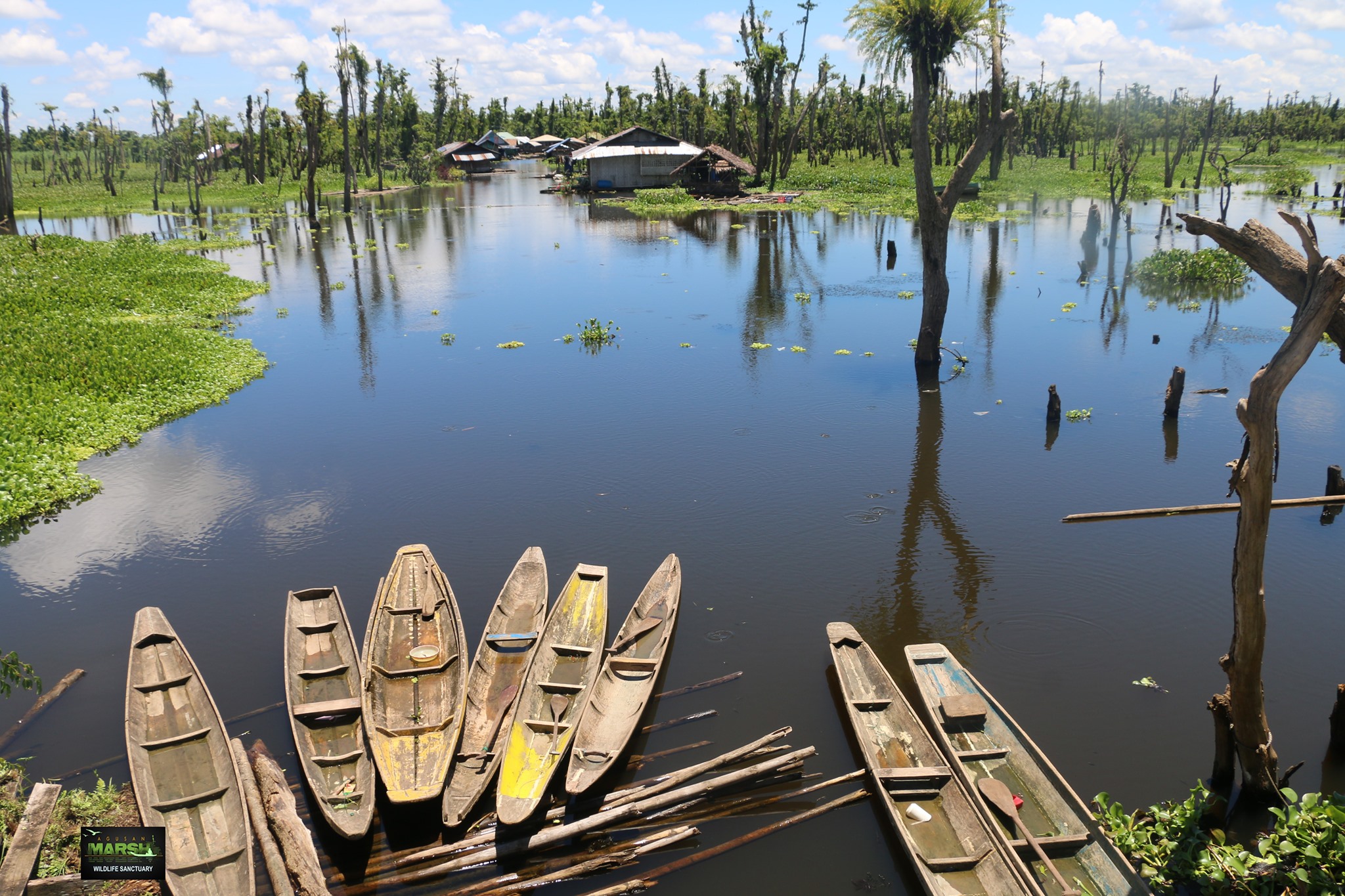 The Panlabuhan Manobo floating village in Lake Panlabuhan, which is one of the most popular and most visited lakes in the Agusan Marsh Wildlife Sanctuary. Photo courtesy of the Agusan Marsh Wildlife Sanctuary- Protected Area Management Office
The Panlabuhan Manobo floating village in Lake Panlabuhan, which is one of the most popular and most visited lakes in the Agusan Marsh Wildlife Sanctuary. Photo courtesy of the Agusan Marsh Wildlife Sanctuary- Protected Area Management Office
BUNAWAN, Agusan del Sur (MindaNews / 8 March) – The Department of Environment and Natural Resources (DENR) and the Philsaga Mining Corp. (PMC) have agreed to rehabilitate a riverbank to provide easier access to the globally acclaimed Agusan Marsh Wildlife Sanctuary (AMWS) located in Lake Panlabuhan, Loreto town in Agusan del Sur.
They signed on Wednesday a Memorandum of Agreement (MOA) to revitalize the riverbank of Dagon Creek in Barangay Mambalili, which will reduce travel time to the AMWS to just 20 minutes by boat, compared to the longer route through the Agusan River, which currently takes over an hour.
The project, funded by PMC with a total cost of P624,000, will focus on rehabilitating nine kilometers on both side of the riverbanks of Dagon Creek through by planting endemic tree species capable of withstanding flooding during heavy rains.
The route from the AMWS-Protected Area Management Office Integrated Protected Area System Complex in Mambalili, where Dagon Creek is located, involves only a 4.5-kilometer boat ride to reach Lake Panlabuhan, home to a Manobo community residing in 36 floating houses.
The primary objective of the project is to reforest brushland areas along the riverbank to mitigate siltation during periods of heavy flooding.
Nonito Tamayo, DENR Caraga director, said that indigenous tree species such as Bangkal, Catmon, Lanipao, and Narra will be planted in a 10-meter wide strip on both sides of the riverbanks of Dagon Creek.
Tamayo assured that the rehabilitation funds provided by PMC will be allocated directly to the people’s organization called Kanimbaylan Bonkogon Lumad Agusan Marsh Loreto Organization (KBLAMLO), disbursed per activity budget until the project’s completion within a year.
In his address prior to the MOA signing, Engr. Ferdinand Cortes, PMC vice president, emphasized the importance of “diligent project implementation,” expressing PMC’s readiness to contribute additional funds for project enhancement.
“Let us not just confine on the MOA signing but to make sure to realize the project,” Cortes said.
Responding to Cortes’ challenge, Remy “Datu Kanimbaylan” Reyes, KBLAMLO chairman, expressed gratitude for the tree planting program along the riverbanks of Dagon Creek.
“ The (Manobo indigenous peoples) in our community have now realized the impact of climate change, that the trees could protect us from strong winds and heavy floodings,” Reyes said in Cebuano.
Forester Norman Asugan, Provincial Environment and Natural Resources Officer, said the project stemmed from “PMC’s commitment to fund environmentally sustainable initiatives,” a condition for obtaining an Environmental Clearance Certificate from the DENR.
“The project is simple but important in the long term. The objective is for people to appreciate the rich biodiversity of Agusan Marsh,” Asugan remarked
According to the DENR Agusan del Sur provincial office, AMWS stands out as one of the most ecologically significant wetlands in the Philippines.
It encompasses unique habitats like the Sago and Peat Swamp Forest, providing refuge to rare and endangered species including the freshwater crocodile (Crocodylus mindorensis), saltwater crocodile (Crocodylus porosus), oriental darter (Anhinga melanogaster), and Philippine sailfin lizard (Hydrosaurus pustulatus).
AMWS serves as a crucial stopover for migratory birds in Asia, with over 15% of the nation’s freshwater resources stored within its boundaries. Its role as a natural “sponge” helps mitigate floods by absorbing excess water from heavy rainfall and rivers coursing through Agusan del Sur, Agusan del Norte, and Compostela Valley, safeguarding downstream communities from catastrophic inundation, DENR Agusan Sur said. (Chris V. Panganiban / MindaNews)
